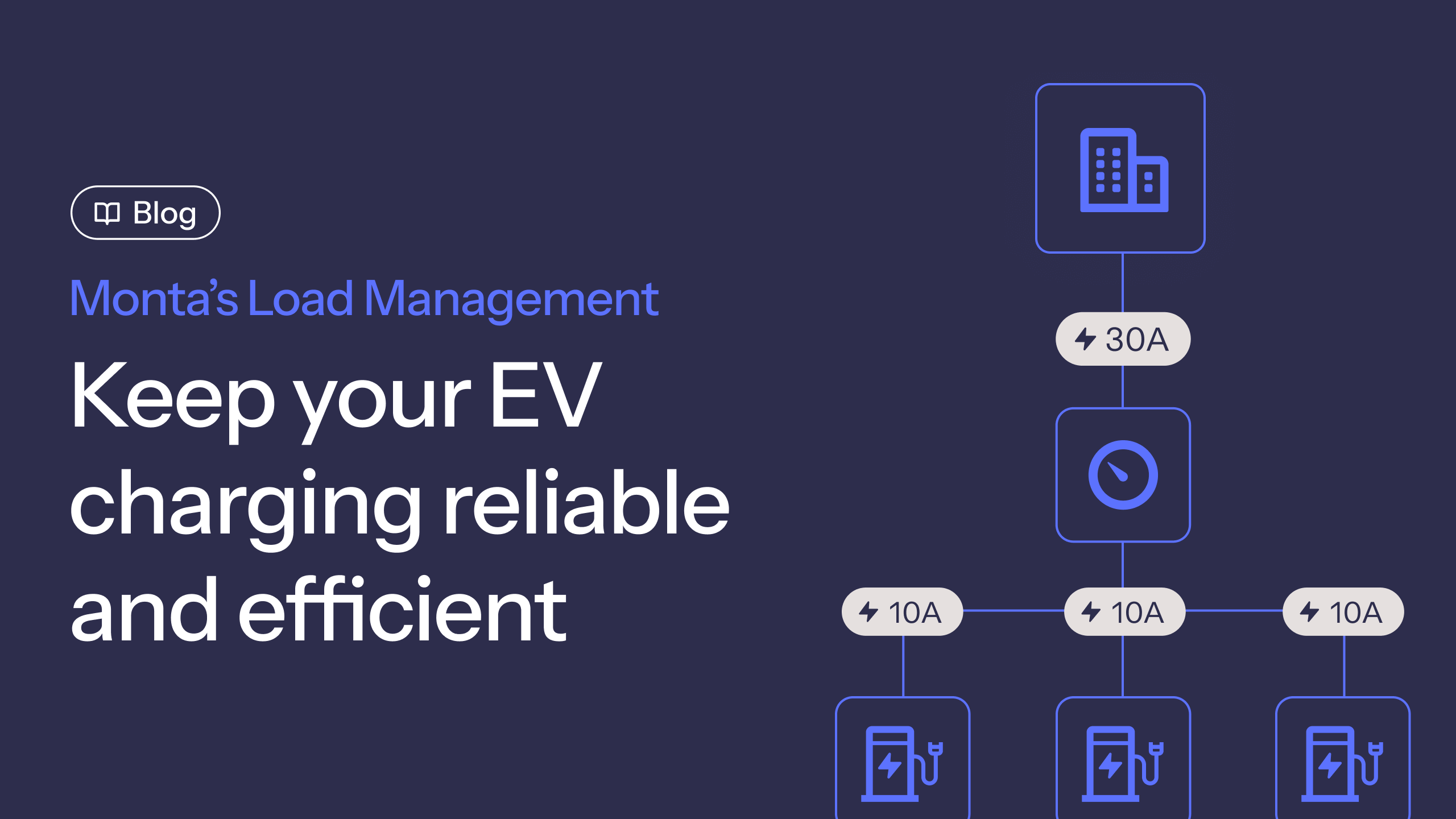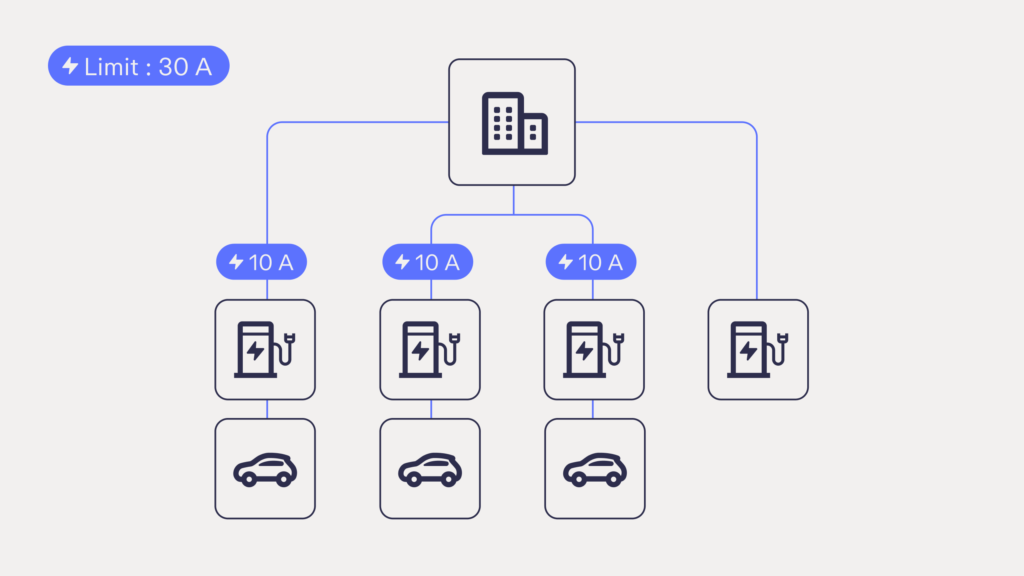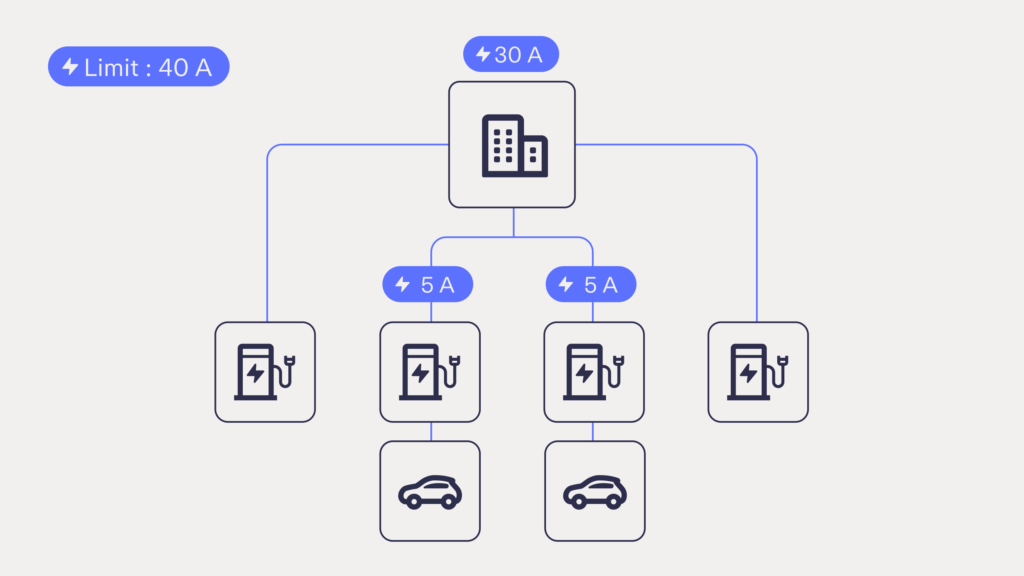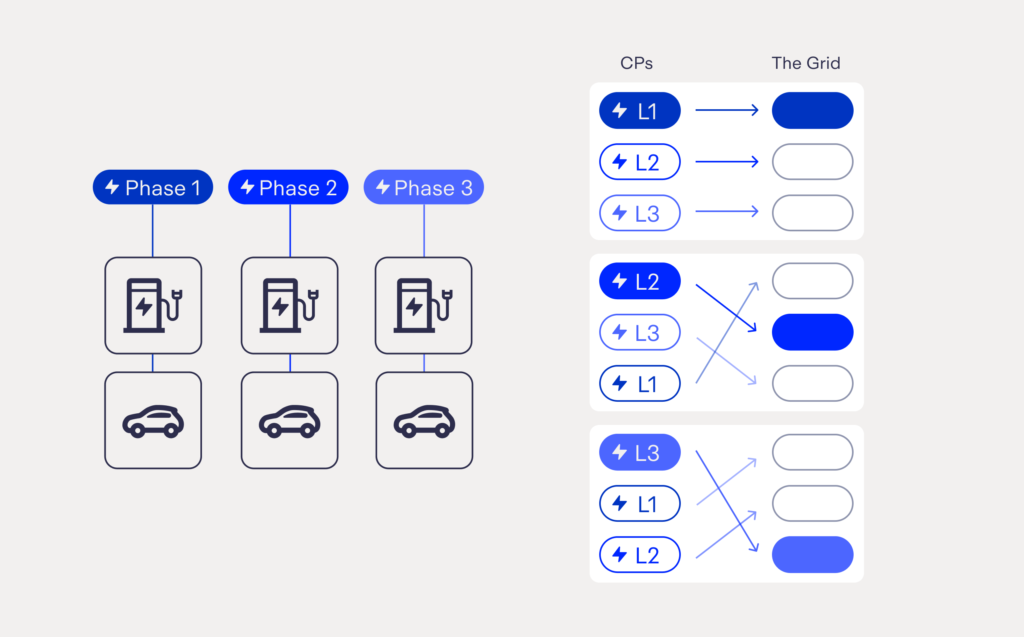
Why intelligent power distribution matters more than ever
As EV adoption grows, the strain on your charging infrastructure increases. Without the right tools, charging stations can face power overloads, downtime, and inefficiencies. Monta’s Load management offers a smart solution to help you distribute power efficiently across your charge points; ensuring consistent performance without breaking the bank.
Without the right tools, charging stations can face power overloads, downtime, and inefficiencies. Downtime isn’t only caused by power issues—losing network connectivity can halt charging too. Using dedicated data-only SIMs at each charger (see our guide) helps prevent communication outages that lead to downtime.
What is EV load management?
Every building and location has a limited amount of power they can count on, so someone needs to be strategic in the way that this power is used to make the most out of it. Load management is here to make that decision for you, as the intelligent tool for power consumption and distribution. For large charging sites or businesses offering charging as part of a broader service, not having a tool like this in place can be a critical blocker to operating effectively.
Why should you care about load management?
The importance of managing the power you have available across all end-points needing electricity (e.g. between your charge points and your building) is crucial to keeping the charging station running without interruptions.
An unbalanced system can result in reduced efficiency, with the available power not evenly or optimally distributed, making the risk of your circuit breakers flipping quite high. This can lead to outages and damages to your charge points and electricity equipment in the long run, significantly reducing their lifespan. Simply put, it hinders an efficient charging process and makes energy usage more expensive.
By utilising any of Monta’s load management options, you can make the most out of your electrical installation without sacrificing performance or cost. It also ensures that your charging site is scalable for future load requirements, for example if you want to add more charge points to your site.
How does it work?
Monta’s Load management automatically shares the available power between all connected vehicles and lets you adjust the settings for each site, so you can make the most of your power capacity without compromising the charging experience. The system measures the available capacity and how much power an electric vehicle needs at a given time.
Monta's load management methods
Monta offers the following methods for Load Management:
Set up:
• Static Load Management
• Dynamic Load Management
Algorithms:
• First Come, First Serve
• Equal Share
Other settings:
• Ampere schedules
• Automatic phase detection
• Charge point priority
What is Static Load Management?
Static load management is a setup where the site has a “fixed” (static) load. A lot of housing associations and residential spaces with multiple charge points use static load management to keep things evenly spread out.

Let’s say a site has 30 amps available and 4 chargers, while 3 are actively charging. With an equal share algorithm, each charger would get 10 amps when all are in use; like a fixed-price menu. But if only one charger is active, it could use more of the available power. Depending on the algorithm used, the distribution can adapt dynamically to match real-time demand.
Dynamic Load Management for EV charging
With dynamic load management, each charger draws its current from a shared pool that adjusts in real time; guided by an external meter that measures the site’s total power availability.
Based on activity and available charging stations, amps will be evenly divided based on the selected algorithm and settings among each charge point and queue up to charge efficiently. This allows for the energy consumption to be more balanced and to reflect with 100% accuracy the energy demand at any given moment.

Phase-Aware Load Management
This is a type of load management that not only takes the power grid into consideration, but also cars charging in different electrical phases. It’s important to note that electricity has three phases; 100amps available across three phases L1, L2, and L3, means that we actually have 100 amps available on each phase.

Without phase-awareness, an electric car charging in phase 1 prevents cars from charging in phases 2 and 3, (and cars charging in phase 2 prevent phase 3 charges).
Our phase-shifting feature allows us to maximize a charge point’s capability. We move the complexity of phase-shifting from the charge point to our system.
A great benefit of a phase-aware and a phase-shifted setup is when certain cars can only charge on phase 1 or phases 1+2, a system without phase-awareness would quickly fill up in capacity, a lot of capacity unused on phases 2 and 3.
A note: An electric car always decides which phase(s) it will charge from, but Monta “tricks” the car by switching the phases when connecting to the grid.
Benefits of Monta’s load management
- Maximized uptime: Power is distributed efficiently, preventing interruptions.
- Cost-effective: Avoid the need for costly infrastructure upgrades.
- Scalable: Easily expand your charging network without worrying about overloading.
- Enhanced customer experience: Offer reliable, consistent charging to your users.
How can I apply load management on my charge points?
Short answer: you can do it directly from the Monta Hub. However, we recommend reading this guide (available in English), that explains in more detail how to set up load management and what you need to consider.
